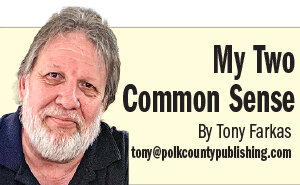The Rise of Cardboard Cutouts in Political Campaigns
In recent years, the political landscape has seen a curious trend: the use of cardboard cutouts in campaigns. This phenomenon, while seemingly lighthearted, raises questions about authenticity, engagement, and the evolving nature of political communication.
What Are Cardboard Cutouts?
Cardboard cutouts are life-sized representations of individuals, often used for promotional purposes. In the context of political campaigns, they serve as stand-ins for candidates, allowing supporters to take photos, engage in conversations, and create a sense of presence where the actual candidate may not be available. These cutouts are often strategically placed at events, rallies, and even in community spaces to maintain visibility and connection with voters.
The Purpose Behind the Cutouts
The primary purpose of using cardboard cutouts is to enhance visibility and engagement. In an era where candidates often juggle multiple events and appearances, cutouts provide a way for supporters to feel connected to the campaign. They serve as a visual reminder of the candidate’s presence, encouraging conversations and interactions among constituents. Moreover, they can be a fun and engaging way to draw attention to a campaign, especially in a world saturated with digital media.
A Tool for Voter Engagement
One of the most significant advantages of cardboard cutouts is their ability to foster voter engagement. When supporters pose for pictures with a cutout, they often share these images on social media, amplifying the candidate’s reach. This grassroots marketing strategy can create a sense of community among supporters, as they share their experiences and encourage others to participate in the campaign. It transforms the often impersonal nature of political campaigning into a more relatable and enjoyable experience.
The Impact on Candidate Image
While cardboard cutouts can enhance a candidate’s visibility, they also raise questions about authenticity. Critics argue that relying on cutouts may signal a lack of genuine engagement from the candidate. Voters may wonder if the candidate is more interested in creating a façade of presence rather than engaging with constituents on a personal level. This dichotomy between physical presence and visual representation can complicate a candidate’s image, making it essential for campaigns to strike a balance.
The Role of Humor in Politics
The use of cardboard cutouts also introduces an element of humor into the political arena. In a landscape often characterized by tension and divisiveness, these playful representations can lighten the mood. They allow candidates to showcase a more approachable side, making them relatable to voters. This humorous approach can be particularly effective in attracting younger voters, who may appreciate a campaign that doesn’t take itself too seriously.
The Future of Political Campaigning
As technology continues to evolve, the role of cardboard cutouts in political campaigns may also change. With the rise of virtual reality and augmented reality, candidates might explore new ways to engage voters beyond traditional cutouts. However, the charm and simplicity of a cardboard cutout are likely to endure, serving as a nostalgic reminder of grassroots campaigning.
Conclusion
The use of cardboard cutouts in political campaigns reflects a broader trend towards innovative engagement strategies. While they may seem like a gimmick, these cutouts play a significant role in fostering connections between candidates and voters. As campaigns continue to evolve, the balance between authenticity and engagement will remain a critical consideration for candidates seeking to resonate with their constituents.
